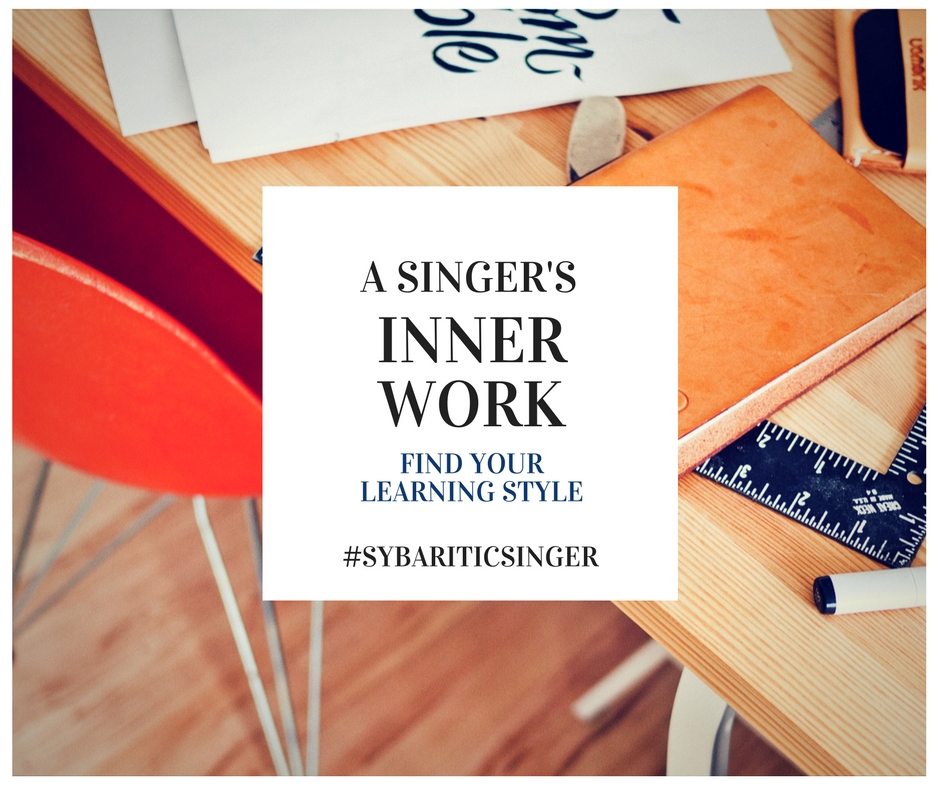I have never met people more obsessed with continuing education and life-long learning than singers and other musicians. You can almost hear the cry from their souls, “I want to know MORE!” We love masterclasses and bootcamps and lessons and coachings and lectures and workshops and… and… and… The list goes on. With all this pursuit of knowledge, it makes sense that we should have a better understanding of the learning styles that help us retain that wisdom. That’s where our inner work comes into play again.
Finding Your Learning Style
Your learning style impacts the way you understand information and solve problems. Knowing the percentage to which you lean on a certain learning style can help when you are learning new repertoire, absorbing information about theory and practice, and considering ways to grow your singer small business.
For the purposes of this post, we’ll break it down into three areas: auditory, visual, and tactile.
Auditory
We all know those musicians who can listen to a song and then immediately sing it back note-for-note. Or, those friends who never needed to take notes in class because they were able to remember the lecture perfectly. Those learners store information by the way it sounds. Auditory learning style adherents take very well to spoken instructions.
In music, auditory learning can take the form of listening to recordings, vocal modeling, reading the text of a piece out loud, countsinging, and having your instructors speak through objectives. Can you add to this list?
Visual
One would assume that all musicians are auditory learners. While musicians are more auditorily skilled, that may not always be their primary or preferred learning style.
As it pertains to music, I’ve always thought of myself as much more of a visual learner. Scat-singing in jazz, harmonic dictation, and rote learning songs have been difficult in my past. However, hand me the lead sheet, show me the orchestral score, or put some Curwen hand signs to the song and I’m right back in the game. The visual element helps us see what we are learning.
Visual learners in music use flashcards to memorize historical facts or theory concepts, create mental imagery for their repertoire, write notes in lessons and lectures, and love to color code. Musical visual learners need to see things, not just hear things, to learn.
Tactile
As singers, most of our daily lives is a mixture of the auditory, visual, and tactile. Even in just one part of a voice lesson we hear our starting pitch, see the music in front of us, and feel the sensations of healthy technique. However, being a primarily tactile learner is more than just focusing on sensations while singing.
Tactile learners understand and remember information through physical movement. Think of your friend who always has to take apart and put back together the entire engine to understand how it works. Communication through touch or understanding the physical movement of something without retaining what was seen or heard are classic tactile learner mannerisms.
Musically inclined tactile learners feel most secure in their music once they’ve blocked the whole show, really respond to Dalcroze Eurhythmics, enjoy learning music with hand signs, memorize vocal lines quicker by being able to play it on the piano or another instrument, and more. What are your favorite ways to incorporate tactile learning into your work or studio?
Show Your (Inner) Work
Take a short, 20 question, self-assessment to determine your learning style. Do your results ring true?
Bonus points: brainstorm more strategies for each type of learning style when it comes to learning technique, concepts, and repertoire for yourself or your students. Write them onto popsicle sticks like we did in our Revolutionize Your Studio post or come up with another way to incorporate them into your daily routine.
Now, that obsessive pursuit of knowledge can be processed in an even more efficient way because of your commitment to knowing yourself. Onward!



I took the assessment. My results make complete sense to me personally I am definitely a visual learner. I love flash cards, pictures, videos and color too. I hate bright lights whenever I am revising for my exams. As a child I loved to read picture books. I keep a map of the world in my apartment as a teaching tool.